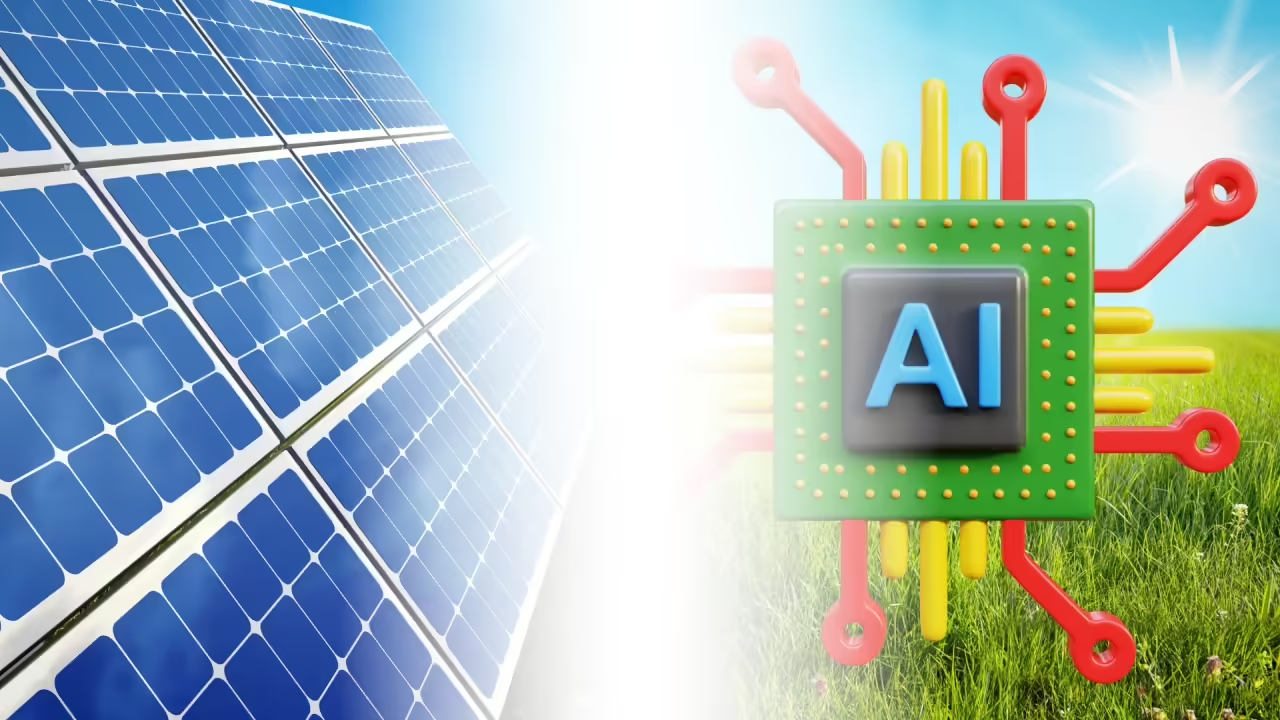
In a world where concern over climate change and the quest for renewable energy sources have become a priority, solar energy emerges as a bright and promising solution. This resource, derived from the radiation of the sun, is rapidly becoming a cornerstone in the transition to a cleaner and more sustainable energy future.
What is Solar Energy? Solar energy is a form of renewable energy obtained from the radiation of the sun. This radiation can be converted into electricity through technologies such as photovoltaic solar panels, or into heat through thermal collection systems. Essentially, solar energy harnesses the immense amount of energy that the sun constantly emits towards the Earth.
Importance in the Current Energy Context In the current context, solar energy plays a crucial role for several reasons:
Environmental Sustainability: Unlike fossil fuels, whose extraction and combustion significantly contribute to climate change and air pollution, solar energy is clean and does not produce greenhouse gas emissions or other atmospheric pollutants. This makes it a fundamental alternative for reducing our carbon footprint and preserving the environment.
Abundance and Availability: The sun is an inexhaustible source of energy widely available worldwide. Unlike fossil resources, which are subject to depletion and often concentrated in specific regions, solar energy can be harnessed virtually anywhere, making it an accessible option for both urban and rural communities around the globe.
Energy Independence: The adoption of solar energy reduces dependence on imported fossil fuels, strengthening the energy security of countries and regions. By generating electricity locally, communities can diversify their energy sources and increase their resilience to power supply interruptions.
Long-Term Cost Reduction: While the initial installation of solar infrastructure may involve significant investment, the costs associated with solar energy have decreased considerably in recent decades. Additionally, once installed, solar systems have relatively low operating and maintenance costs compared to conventional power plants, resulting in long-term savings for consumers and businesses.
History and Background of Solar Energy: A Journey Through Time
The history of solar energy dates back thousands of years, with humanity harnessing solar radiation in various ways to meet its energy needs. Here is a brief historical overview of early uses and key developments in solar energy capture and utilization:
Antiquity: Solar Cooking: One of the earliest uses of solar energy was likely solar cooking. It is estimated that over 2,000 years ago, ancient civilizations in the Mediterranean and the Middle East used parabolic reflectors to concentrate sunlight and ignite fires for cooking food.
Food Drying: Another common practice in antiquity was sun drying food. Egyptian civilizations, for example, used the sun to dry fruits, meat, and fish, thus preserving food for later consumption.
19th Century: Discovery of the Photovoltaic Effect: In 1839, the French physicist Alexandre-Edmond Becquerel discovered the photovoltaic effect, which is the basis for converting sunlight into electricity in modern photovoltaic cells. This discovery laid the groundwork for solar technology development. 20th Century: Photovoltaic Cells: Throughout the 20th century, significant advances were made in photovoltaic cell technology. In the 1950s, scientists developed the first silicon photovoltaic cells, which were initially used in space applications.
Solar Water Heating: In the 1970s, solar water heating for residential use became popular. Thermal solar collectors were used to heat water for domestic purposes, such as showers and space heating.
Policy and Subsidies: During the energy crisis of the 1970s, many countries began actively promoting solar energy as an alternative to fossil fuels. Policies and subsidies were implemented to encourage the adoption of solar technologies, contributing to the growth of the solar industry.
21st Century: Exponential Growth: In the 21st century, solar energy experienced exponential growth worldwide. Technological advancements, along with decreasing costs of solar panels, have made solar energy increasingly competitive compared to conventional energy sources.
Innovations: Various innovations have been developed in the field of solar energy, such as thin-film solar cells, solar tracking systems, and energy storage through batteries, which have improved the efficiency and reliability of solar energy.
The Era of Solar Panels: Revolution in Renewable Energy Generation Photovoltaic solar panels have triggered a true revolution in renewable energy generation, transforming how we obtain electricity and opening new possibilities in the fight against climate change. From their invention to their widespread adoption worldwide, these devices have proven to be a fundamental piece in the transition to a cleaner and more sustainable energy future.
Photovoltaic Revolution: Photovoltaic solar panels, often simply called solar panels, convert sunlight into electricity through the photovoltaic effect. This technology has revolutionized energy generation in several ways:
Environmental Sustainability: By not producing greenhouse gas emissions or atmospheric pollutants during operation, photovoltaic solar panels are a clean and environmentally friendly option for electricity generation, contributing to climate change mitigation and pollution reduction.
Energy Independence: The installation of solar panels allows individuals, businesses, and communities to generate their own electricity, thereby reducing their dependence on conventional electric grids and imported fossil fuels. This promotes energy autonomy and supply security.
Cost Reduction: As photovoltaic technology has matured and production scale has increased, the costs of solar panels have significantly decreased in recent decades. This has made solar energy increasingly competitive compared to conventional energy sources, enabling broader access to clean and renewable energy.
Technological Developments: Several technological developments have contributed to improving the efficiency and reducing the costs of photovoltaic solar panels:
Advances in Materials: Ongoing research has led to the development of new semiconductor materials for solar cells, such as perovskites and organic materials, which offer potentially higher efficiencies and lower production costs.
Innovations in Design: Improvements in the design of solar panels, including optimizing the arrangement of solar cells, using reflective materials, and incorporating solar tracking systems, have increased solar light capture and improved the overall efficiency of photovoltaic systems.
Economies of Scale: The global growth of the solar industry has enabled the implementation of economies of scale in the production and installation of solar panels, contributing to cost reduction and making solar energy more accessible to a wider range of users.
Applications of Solar Energy: Diversification and Sustainability in Various Sectors
Solar energy has found a wide range of applications in various sectors, from residential to industrial and agricultural. Below, we will explore how solar energy is used in each of these sectors:
Residential Sector: Roof Solar Panels: One of the most common applications of solar energy in the residential sector is the installation of photovoltaic solar panels on the roofs of homes. These panels convert sunlight into electricity that can be used to power household appliances and electrical systems.
Solar Water Heaters: Solar water heaters use thermal solar energy to heat water for domestic use, such as showers, laundry, and pool heating. These systems are often more efficient and cost-effective than conventional gas or electric water heaters.
Commercial Sector: Solar Buildings: Many commercial buildings are incorporating solar energy systems into their structures, either in the form of rooftop solar panels or integrated into building facades. These systems can help reduce energy costs and the carbon footprint of businesses.
Solar Lighting: Solar lighting, which uses LED lights powered by solar panels, is becoming increasingly popular in commercial environments. These lights can illuminate outdoor areas, parking lots, streets, and gardens without the need for connection to the electrical grid.
Industrial Sector: Solar Energy for Industrial Processes: In the industrial sector, solar energy is used to power a variety of processes, such as steam generation, water desalination, cooling, and operation of machinery and equipment.
Large-Scale Solar Generation Facilities: Large-scale photplants and solar thermal plants provide power to the electrical grid to supply industries and entire communities. These installations can be located in vacant lands or desert areas where there is high availability of sunlight.
Agricultural Sector: Solar Irrigation: In agriculture, solar energy is used to power irrigation systems that allow for more efficient and sustainable crop irrigation. Solar irrigation systems can operate in remote areas where there is no access to the electrical grid.
Solar Drying: Solar dryers are used to dry agricultural products such as fruits, vegetables, grains, and herbs using solar energy instead of fossil fuels. This helps preserve food and reduces drying costs for farmers.
Innovations and Recent Advances in Solar Technology: Heading Towards a Promising Energy Future Solar technology has undergone constant evolution in recent decades, driven by the need to find more efficient, economical, and sustainable solutions to meet our energy demands. Below, we will explore some of the latest trends and advances in the field of solar energy:
Thin-Film Solar Cells: Thin-film solar cells represent an alternative to conventional silicon solar cells, offering advantages in terms of flexibility, weight, and production costs. Some of the most promising types of thin-film solar cells include:
Cadmium Telluride (CdTe) Solar Cells: These solar cells have gained popularity due to their high efficiency and low production cost. Industry-leading companies are investing in improving this technology to further increase its performance and competitiveness in the market.
Copper, Indium, Gallium, Selenide (CIGS) Solar Cells: CIGS solar cells are known for their high efficiency and ability to operate under low-light conditions. Advances in CIGS cell manufacturing have reduced costs and increased the commercial viability of this technology.
Solar Concentrators: Solar concentrators use optical systems to focus sunlight onto smaller areas, thereby increasing the intensity of the incident solar radiation on solar cells and improving system efficiency. Some notable types of solar concentrators include:
High-Concentration Photovoltaic Concentrators (HCPV): These systems use lenses or mirrors to concentrate sunlight hundreds of times onto solar cells, allowing for higher efficiencies compared to conventional solar panels.
Solar Thermal Concentrators: These systems concentrate sunlight to generate heat rather than electricity. They are used in applications such as electricity generation using Stirling engines or steam production for industrial purposes.
Solar Tracking Systems: Solar tracking systems adjust the orientation of solar panels to track the sun’s movement throughout the day, maximizing solar light capture and increasing the efficiency of photovoltaic systems. Some notable developments in this field include:
Dual-Axis Solar Trackers: These systems allow solar panels to move in two directions, tracking both the sun’s path in the sky and its seasonal inclination. This maximizes solar exposure and increases energy production.
Advanced Control Systems: The implementation of intelligent control algorithms and high-precision sensors has improved the ability of solar tracking systems to optimize performance in real-time, even under variable weather conditions.
Ongoing Research and Pilot Projects: Integrated Energy Storage: Integrating energy storage systems, such as lithium-ion batteries and thermal storage systems, with solar technologies is undergoing intensive research. This will enable the storage of solar energy for use during periods of low solar radiation or during peak demand hours.
Development of Advanced Materials: Research into new materials, such as perovskites and nanomaterials, holds promise for further increasing the efficiency and reducing the costs of solar cells. These materials could pave the way for a next generation of more efficient and economical solar technology.







